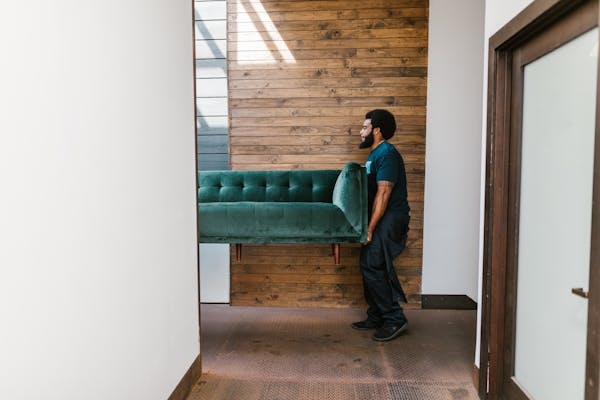[ad_1]

Owsley “Bear” Stanley lived in a cottage in Berkeley’s Poet’s Corner neighborhood for just a short while during the Summer of Love. But as the King of Acid knew well, small doses pack a punch.

A sound engineer for the Grateful Dead who made his own LSD and supplied it to everyone from the Merry Pranksters to the Beatles, Stanley moved into the cottage that resembles a Brothers Grimm fairytale in the spring of 1967. In December 1967, narcotics agents raided Stanley’s drug laboratory in Orinda, and he spent much of the next five years in jail.
The cottage, commonly known as the Troll House and located at 2321 Valley St. (north of Channing Way), is for sale and listed at $899,000. With a cobblestone path leading to the front door, stained-glass windows and a cylindrical chimney, the aesthetics still pale in comparison to characters who occupied the two-bed, one-bath dwelling during the counterculture movement.
“Don’t call it the Troll House!” urged Rhoney Gissen Stanley, one of those cottage characters. Rhoney married Stanley “in a hippie sort of way,” she said, and raised their son, Starfinder, while the father served time after the lab bust. “We didn’t call it the Troll House,” she insisted.
Rhoney recalls riding on the back of a Hell’s Angel’s Harley Davidson around Poet’s Corner, going “round and round the cul-de-sac.” She danced with spiritual teacher Richard Alpert, better known as Ram Dass, who experimented in LSD with Stanley. “He was my dancing partner,” she said. “Bear loved to dance and so did Ram Dass. He was a fabulous dancer.” She said Stanley, who died in a 2011 car accident, had a contentious relationship with Harvard psychologist Timothy Leary, an LSD advocate who also worked with Ram Dass. “Owsley didn’t like drinking so he didn’t get along with Leary,” she said. “He thought alcohol was a bad high.”
The “Troll House” nickname for Stanley’s cottage is most firmly established in countercultural lore by a 1982 Rolling Stone article written by Charles Perry, who once roomed with Stanley and observed the rise of his LSD empire and taste for the arts.
“The Troll House, as some people called it, was a regular stopover for the transcontinental psychedelic elite,” Perry wrote. “There was usually somebody trying to sleep on the pillow-strewn floor while the 24-hour-a-day party lurched along. I dropped by every week or so to see the latest wrinkle: ether-extracted THC, the advance copy of the Beatles’ Sgt. Pepper’s Lonely Hearts Club Band or whatever.”
At a May 14 open house (another will be held this Sunday, May 22), hundreds of prospective buyers and culture junkies took selfies in the walk-in fireplace and asked about the cottage’s place in the counterculture movement. “It’s a huge selling point,” Red Oak Realty agent Chiméne Pollard said. “About 80% of the people knew about the history, about 30% are fans of architecture and style. I felt like a docent. It is a sweet moment to have this experienced by everyone.”
Among the visitors was Rhoney, who wrote Owsley and Me: My LSD Family, “a love story set against the background of the Psychedelic Revolution of the ’60s.” The book, published two years after Stanley’s death, was co-written with Saturday Night Live writer Tom Davis. “Most of the time memories are about trauma, pain and unpleasant stuff,” Rhoney said by phone. “We remember the hard stuff rather than the easy stuff. I had no bad memories [of the cottage]. I only had good memories.”
Belinda Taylor, a longtime editor for The Oakland Tribune, was inspired to purchase the Troll House in 1990 by her love of the house’s history and architecture. It was while living in the cottage that she wrote Becoming Julia Morgan, a play about the iconic Bay Area architect.
Taylor’s “most productive creative times were in that house,” said daughter Jenny Taylor, who inherited the home when Belinda died in 2018. “She was so infatuated with this house and all of its history. To the day she died she loved that house more than anything she’d loved before.”
The Fox Bros Construction Company built the 1,238-square-foot home in 1928, four years after the company’s founding, according to the Berkeley Architectural Heritage Association. Carl Fox, principal of the firm, used irregular Dutch-origin Clinker bricks to provide its storybook character.
While the Troll House has been written up by the Berkeley Historical Plaque Project, it is not an official Berkeley landmark, which means its next owners can more easily renovate the property. (The Fox Bros built two groups of similar storybook cottages that are landmarks: Fox Commons is located at 1670-76 University Ave. and Fox Court is at 1472-78 University Ave. Fox Court is listed on the National Register of Historic Places.)
“There was usually somebody trying to sleep on the pillow-strewn floor while the 24-hour-a-day party lurched along.” — Charles Perry
Coincidently, it was during Stanley’s time at the cottage when the Taylors relocated from Ohio to the Bay Area during the Summer Of Love. Jenny said her mother “kept hearing the song California Dreamin’ and could not help it. We protested in People’s Park. I was one of the kids who put flowers in the rifles of the National Guard.”
The Summer of Love was largely defined by counterculture music, political protests during the Vietnam War and drug experimentation. Here’s how Perry described a pill of Stanley’s LSD in Rolling Stone:
“In about 40 minutes I was two-dimensional, fading into the wall of the World Womb, which turned into the wall of an Egyptian tomb, and I was a painting of an ancient Egyptian on a tomb wall with hieroglyphics sprouting from my elbows and knees and disappearing down the wall too fast for my two-dimensional eyes to read.”
The LSD experience was elevated by the decor of Stanley’s cottage. He filled it, Perry wrote, “with Persian rugs, hi-fi equipment, Indian fabrics, Tibetan wall hangings, pillows, hash pipes, musical instruments made by his personal guitar maker and all sorts of electronic toys, such as ultraviolet lamps and strobe lights.”
Stanley owned a pet owl after deciding it was the totem pole animal of longtime girlfriend Melissa Cargill, according to Robert Greenfield’s book Bear: The Life and Times of Augustus Owsley Stanley III. The owl was named Screech, after the sound Cargill made when she first saw it. At the Troll House, the owl often escaped its cage to the living room rafters. Perry, previously an animal caretaker, was often asked to retrieve the bird. At Saturday’s open house, visitors spotted Screech’s scratch marks on rafters while walking up the stairs.

“It was my job to take care of the owl,” said Rhoney, who during the open house noticed the bathroom where she would place the owl with its meal, a live mouse, and then shut the door. “The owl died the day after Bear went to prison.”
Rhoney said the cottage also had a rabbit, given by novelist and friend Ken Kesey (the leader of the Merry Pranksters), that often scampered into Bob Thomas’ art studio. Thomas drew an iconic Grateful Dead album cover (“Live/Dead”) and the band’s trademark skull and lightning logo, with inspiration from a vision Stanley had during a road trip from Oakland to Novato.
“One day in the rain, I looked out the side and saw a sign along the freeway which was a circle with a white bar across it, the top of the circle was orange and the bottom blue,” Stanley wrote on his website, thebear.org. “A thought occurred to me: if the orange were red and the bar across were a lightning bolt cutting across at an angle, then we would have a very nice, unique and highly identifiable mark to put on the equipment.”
Following Stanley’s arrest in the drug raid, Rhoney said she was the last to leave the cottage, though she can’t recall how much longer she stayed. “In those days so much happened in one day,” the UC Berkeley graduate said. “We all moved to a house in Piedmont.”
A three-minute virtual tour of the property (see above), written and produced by Micha Dunston and paid for by Red Oak Realty, pans across the living room where friends once sprawled across Stanley’s pillows. “If walls could talk,” says Taylor, serving as the video’s narrator, “its words would likely be a psychedelic poem.” The footage continues up the stairs, through bedrooms, into the kitchen and the backyard.

Stanley, the grandson of a Kentucky governor who ditched the first name Augustus, moved to Berkeley in 1963. He dropped out of university classes to join the Bay Area’s psychoactive drug scene. Cargill, a Cal chemistry student, helped him assemble and operate the drug labs.
Stanley turned many musicians on to his LSD through Acid Test parties, some organized by Kesey and the Merry Pranksters. At one of these Acid Tests in 1965, Stanley gave $10,000 worth of electronic sound equipment to The Grateful Dead. LSD was made illegal during Owsley’s time in the cottage, leading to the fateful raid on his Orinda lab.
After Stanley’s release from prison in the early 1970s, he would help perfect the Dead’s Wall of Sound — the largest concert sound system then in existence. According to a Dead Heads newsletter, the system used clusters of 5-inch, 12-inch and 15-inch speakers and operated on 26,400 watts of continuous power to project acceptable sound in the open air at a quarter of a mile and a clear sound up to 500 or 600 feet.
“We had a fabulous sound system,” Rhoney remembers about the cottage. “The first speakers for the Grateful Dead came out of that house.”
Rhoney dreams of one day setting the house up as a historic monument.
“Wouldn’t that be cool?” she ponders. “If I could set up a trust. … I don’t know. I don’t know how I’m going to buy it. But it’s going to go for a million dollars?”
More 1960s nostalgia, in the form of the Bay Area housing market.
The Troll House, located at 2321 Valley St. in Berkeley, is a two-bed, one-bath cottage listed at $899,000. You can see the listing and details about this Sunday’s open house on the Red Oak Realty website.
[ad_2]
Source link








